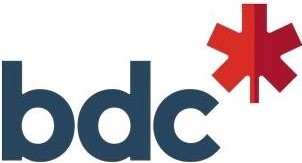
Women-Led Ventures
Canadian Women Entrepreneurs Face More Challenges Than Men
Updated: March 30, 2022
Entrepreneurship has long been seen as a catalyst of economic growth and national prosperity. But in Canada, new business ventures are still much more likely to be led by men than by women.
In 2018, less than 20 per cent of Canadian small-to-medium enterprises were wholly or majority owned by women. That is, women represent a large pool of potential entrepreneurial talent that is largely going untapped. Indeed, economists estimate that increasing the number of women-led SMEs by only 10 per cent would add approximately $150 billion to Canada’s GDP.
In speaking with entrepreneurs who recently closed Series A financing, we’re exploring the differences and similarities in the management and fundraising approaches of men and women Canadian technology entrepreneurs.
Though some entrepreneurial experiences are common to both genders, many of their experiences differ, including methods of financing/funding; instances of sexism; interactions with venture capital firms; and number of pitches made before securing financing.
Understanding why differences in participation persist in this area is critical to devising better policies and educating financial professionals on the approaches taken by men and women, so that women’s access to capital is not skewed by misperceptions or bias. To do that, one of the main focuses of our research is the challenges faced by female entrepreneurs.
Parallel Paths, Unique Challenges
March 30, 2022
As recently as 2018, only 15.6 per cent of small and medium-sized enterprises (SMEs) in Canada were wholly or majority-owned by women. In the United States, funding to women-led businesses accounts for only 2.3 to 2.7 per cent of investments by venture capitalists. Compounding this issue has been the reluctance of women entrepreneurs to seek and obtain institutional financing with only 32 per cent attempting to raise additional funds through sources other than friends and family. Clearly, women represent a large pool of potential entrepreneurial talent that is going largely untapped; indeed, economists estimate that increasing the number of
women-led SMEs by only 10 per cent would add approximately $150 billion to Canada’s GDP.
Impact Paper • 27-min read
Key Takeaways to Help Close the Gender Divide
How Funders Can Help
Advice for Inspiring Entrepreneurs
Key Findings
Longer Routes From Start-Up to Scale-Up
Women run businesses in technology have longer routes from start-up to scale-up. For example, compared with the men in our study, women reported doing more funding pitches than men and taking longer to raise their Series A financing.
Business Pitches
When pitching their business to venture capitalists, women emphasized their business’ financial sustainability, while men emphasized their business’ growth potential.
Growing a Business
While growing a business from an idea to a multi-million-dollar enterprise is an arduous challenge for both women and men, Canadian women entrepreneurs identified a number of unique challenges and explicitly articulated the need for entrepreneurs to demonstrate grit and resilience.
Leadership Style
Female entrepreneurs’ leadership style is highly people-focused with a strong emphasis on integrating organizational values into the fabric of their organizations and creating inclusive environments.

Testimonial
Recent Releases

Parallel Paths, Unique Challenges
March 30, 2022
Entrepreneurship has long been seen as one of the main wellsprings of economic growth and national prosperity. Yet new business ventures today are still much more likely to be led by men than by women. Understanding why differences in participation persist in this area is critical to devising better policies. A stronger understanding is also an important means of educating financial professionals on the approaches taken by men and women so that access to capital is not skewed by misperceptions or bias.
Impact paper • 27-min read

How Funders Can Help Close the Gender Divide While Growing Their Bottom Line
March 30, 2022
Our research found that women entrepreneurs face greater challenges when moving their business from start-up to scale up. Venture capital firms can take a number of steps to position their organizations as attractive partners for women entrepreneurs and potentially enhance their ability to generate better returns.
Online experience • 8-min read

Advice From Current Entrepreneurs to Aspiring Entrepreneurs
March 30, 2022
We met with 30 founders of scale-up business ventures and asked them for their advice for aspiring entrepreneurs. Some tips include recognizing that it’s not easy, but it’s getting better; build networks with people you can trust; be comfortable having a strong point of view while remaining open to failure and learning from it; and don’t shy away from focusing on being an people-centric leader focusing on building sustainable, inclusive, and a values-driven culture.
Online experience • 8-min read
Related Research

Canadian Human Resources Metrics Benchmarking
January 31, 2023
Build and refine your Human Resources (HR) practices for managing your teams. Understand the current business environment, and know what’s changing. Our data from across Canadian industries and regions will help you see where you excel and where you can grow.
Online experience • 8-min read

It’s Time To Move From Good Intentions to Meaningful Impact
April 14, 2021
While some incremental progress has been made, there is no compelling evidence that voluntary “comply or explain” disclosure requirements have accelerated the entry of women into the boardrooms of companies listed on the Toronto Stock Exchange.
Op-ed • 4-min read

All on Board: Turning Evidence into Action for Women’s Leadership
September 23, 2020
Canadian governments, corporate stakeholders, and advocacy organizations sought to use disclosure to accelerate women’s representation. Disclosure is a regulatory approach that requires companies to: (1) disclose the number of women on their boards and (2) disclose the efforts they have made (or not) to increase that representation.
Impact paper • 16-min read













